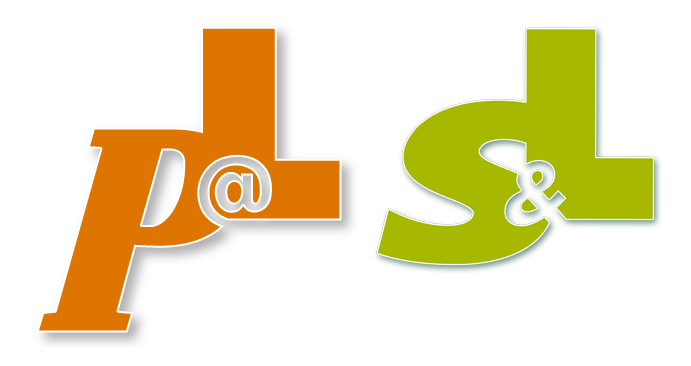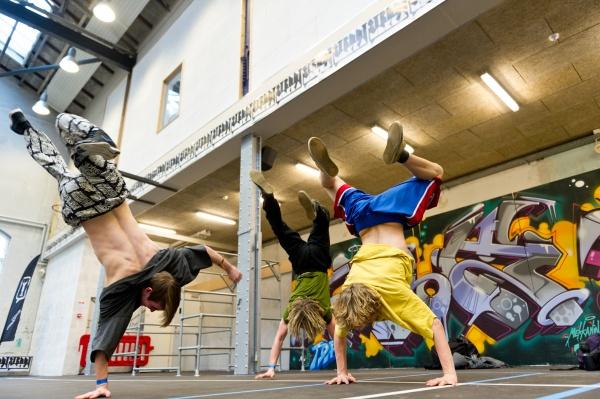Fair city sharing - what can urban planning contribute?
Our cities have grown over centuries. This also reflects the history of urban society, i.e. who was in charge, which professions were accessible to whom. A city is a multi-layered structure:...


YOUR FORUM FOR PLAY, SPORTS UND LEISURE AREAS

Children and young people, particularly those who do not find their way to traditional sports facilities or clubs, are mad about street culture. Three Danish streetmekkas are showing how modern active leisure facilities can embrace a range of organisational forms under the same roof within confined urban environments.
At Streetmekka Aalborg it is Saturday morning. A group of teenage boys are playing basketball on the tarmac in the vestibule, and four girls have occupied the mirror room on the first floor. They are working on their breakdancing, unsupervised. Around noon the first playmakers turn up to inspire and challenge today’s participants in the open parkour session. In the evening the local climbing club have bouldering classes in the climbing area, and city kids practice their talent for street art. This is what a modern sports facility with a range of organisational forms looks like.
Streetmekkas: pathfinders for new organisational forms
Children and young people have picked up on street sports and street culture, originally characterised by an informal, flexible community spirit that arose spontaneously in the street and did not belong in a leisure facility. The desire to continue such activities in the cold, wet winter months led to the transformation in 2010 of a former industrial building in Copenhagen into Streetmekka Copenhagen, the first model for a streetmekka. Working with other stakeholders, the Danish Foundation for Culture and Sports Facilities developed two new homes for street sports and culture, and in 2018 streetmekkas opened in Viborg and Aalborg too. The streetmekkas have not only provided an indoor home for activities such as parkour, street art, off-road bikes and scooters and the special lifestyle, music and jargon that characterises street culture. They have also set new standards individual, semi-organised or wholly organised leisure pursuits side by side in the same facility.
Street sports attract more young people
Children and young people pursue street sports across the age, gender, ethnic and social background divide. 23 per cent of children with or without immigrant backgrounds pursue street sports, in contrast to the overall picture of sports participation in Denmark, where children of parents born outside Europe are generally less active than children without immigrant background, as the Street Sport Participation in Denmark 2017 report by the Danish Institute for Sports Studies shows. Street sports and culture also appeal to girls; as teenagers it is often a challenge to keep them interested in active leisure pursuits. An annual report by street sports organisation GAME shows that participation by girls increased from 25 per cent in 2016 and 2017 to 38 per cent in 2018, and that the Streetmekkas in Aalborg and Viborg have succeeded in attracting the kids whom local sports clubs find it difficult to attract.
Play and creativity matter more than achievement
Street sports offer an open, playful, creative environment, and this attracts some of the kids not adjusted to the regular leagues and tournaments or practice times around which sports are traditionally based. The older kids get the greater their need to decide for themselves when and where to do sports. The Danish Institute for Sports Studies report reveals that the greatest motivational factors for children when it comes to doing sports are “having fun”, “time with friends”, and “improving my game”; the least motivating factor is “winning”. In street sports they learn new tricks and skills, experience the joy of personal development and the company of friends, rather than performing well.
Streetmekkas provide activities that can be regular or flexible
Street sport facilities mean more ways of pursuing an activity. They have also generated more structures and settings for introducing kids to activities and the street environment. For some children and young people this may be necessary, as becoming part of the street community requires social, physical and technical skills. But the facilities also have their limitations, and for some kids the time may come when they need to leave the facility and seek new pastures in the urban environment. The streetmekkas are designed for open, versatile use that sustains the multiple ways in which they are organised. The spaces are flexible, the facilities mobile, indoors and outdoors merge, and lounge areas and social zones allow space for getting together, meeting informally in ways that mean you are still a participant even if you just watch from the side lines. Streetmekka Viborg has 3759 members and Streetmekka Aalborg has 3433; together they notched up over 60,000 visits in 2018.
Check out more Danish Foundation for Culture and Sports Facilities projects at www.loa-fonden.dk
Q&A: Esben Danielsen, CEO, Danish Foundation for Culture and Sports Facilities
Playground@Landscape (P@L): Why is there a need for modern leisure facilities to embrace more organisational forms?
Esben Danielsen: Sports trends and habits are changing more rapidly than ever. Everybody has multifaceted leisure pursuits. We all want to pick and mix, constantly seeking novelty, variety, and quantity. We need inspiration and new opportunities. And this happens most emphatically if we encounter a palette of interesting options in one facility.
P@L: What are the characteristics of the kind of leisure facility created by these new streetmekkas?
Esben Danielsen: The streetmekkas revolutionise the whole sports hall concept. Their basis is no longer handball or badminton but a range of new sports and reinterpretations of familiar ones. Meanwhile they are meeting points that tap into tendencies in youth culture in ways unlike the more familiar sports halls. To much of the younger generation, music, community, hanging out and partying belong more in streetmekkas than in handball halls.
P@L: How do the streetmekkas sustain play and creativity?
Esben Danielsen: They encompass more ways of joining in. If you like you can visit regularly, or you can just check things out if you are not yet sure, and if you are invited inside you can safely feel your way. The hosts and invitations match the different activities. In most cases you can get started on these activities quickly and experience your first triumphs. You can play your way forward. This is an idea that challenges many of our traditional sports.
P@L: What do the streetmekkas mean to the cities?
Esben Danielsen: The streetmekkas provide meeting points within a constructive and robust setting for the youth cultures that do not get much of a look-in at traditional sports facilities. They are an arena for new segments to join strong communities instead of remaining on the periphery. They attract and retain teenagers, especially teenage girls, to a greater degree.
P@L: What do you see as the future trends for urban leisure facilities?
Esben Danielsen: They will involve meeting points that couple the informal and straightforward with the special and ambitious. They will permit many formats, abilities and interests to thrive under the same roof. The sense of community will be central, but often more indirect and straightforward. And the facilities will have to be within the city confines: we are talking city centres side by side with shops and public spaces.
More Information:
STREETMEKKA COPENHAGEN
Streetmekka Copenhagen occupies two redundant roundhouses in the city’s SW district. It was the first of the three streetmekkas to give street sport a roof over its head back in 2010.
Street culture and street sports range widely on the activity palette, with a DJ college, street basket, dance, parkour and graffiti.
The Streetmekka gates can still open, allowing close contact between the indoor and outdoor scenes. The DJ college windows serve as small gates from which sound can flow into the yards when music is required for outdoor activities in the summer half of the year.
With a view of Vestre Prison a large dance hall with parquet flooring and seating can be found hiding away at the back of the building.
There is a smaller hall with a tarmac floor where users can play street soccer and practice parkour on custom mobile frames.
Constructed in 2010 / Building costs: DKK 28 million
STREETMEKKA AALBORG
The buzz of street activities hits you before you have even entered the streetmekka in the Northern Juttish city of Aalborg. Large concrete blocks at the entrance bid you welcome to parkour, and the rough surfaces of the old concrete building are adorned with graffiti.
The facility enjoys a central location just two kilometres from the city centre in an area known as “Eternity”, and the new street sport and street culture house has become part of an extensive urban conversion process on a former factory site.
On entering the building, it is obvious that some of the character of the original building has been preserved. The original concrete structure now features a climbing wall, and a few carefully chosen tweaks have enabled completely new uses for the building that strongly signal the takeover by street culture.
This streetmekka is more than just an option for children and young people interested in street culture. It has become a meeting point for residents and clubs in the area surrounding Eternity and is helping to forge a strong community in a new city quarter.
It has created a social venue in a burgeoning Aalborg quarter that also invites marginalised groups, including children and young people with mental health issues, into the building, framing a community and social life with everything from lounge areas, a street food kitchen, and creative spaces for climbing, dance, and parkour.
Constructed in 2018 / Building costs: DKK 21,362,500
STREETMEKKA VIBORG
The Mid-Juttish city of Viborg is home to Streetmekka Viborg, a fascinating take on how to revitalise an old building to match contemporary activity trends. It used to belong to wind turbine manufacturers Vestas but is now a home for anyone into street. The rough-hewn industrial building has been given a new lease of life and is now a model for rejuvenating industrial buildings and again put architecture and movement into play.
Viborg juxtaposes street sports and street culture and enabled street art to find expression in many different idioms inside and out. Graffiti, street sculpture, animations, video, rap and much more besides have been given space within the old walls. By building bridges between movement and culture the facility appeals widely and has helped to attract completely new user groups to street culture.
With its range of different activities and focus on social, inclusive architecture the building is particularly appealing to girls. An urban garden, workshops and spaces for soft forms of movement have given the building a new identity and idiom.
Constructed in 2018 / Building costs: DKK 23,875,000